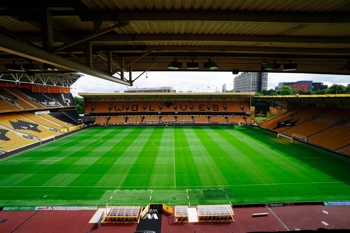SIMPLY EFFICIENT

As businesses and organisations look to improve their building’s energy performance and cut costs and emissions, heating is a frequent starting place for efficiency measures.
With 80% of UK buildings still heated by gas, many non-domestic buildings rely on commercial boilers for their heating. Replacing dated, inefficient boilers with advanced condensing boilers is widely acknowledged as a low-cost solution to significant energy and carbon savings – up to 48%, in our experience.
But shrinking plant room space, particularly in city centres, combined with awkward or restricted access, can complicate what can and should be a straightforward upgrade for installers.
An added hurdle may be the need to achieve increased heat output within the same plant footprint to meet the changing demand of the building. Or to carry out a live boiler replacement so that the building’s heat provision and day-to-day operation can continue uninterrupted.
Circumstances like these can prove challenging – especially when timeframes are tight. So how are commercial boiler manufacturers helping contractors ensure a smooth, high-quality and seamless boiler installation?
When it comes to boiler installation, size really does matter, making this aspect a key consideration for installers.
Fortunately, continuous product development and ongoing evolution of boiler design by manufacturers like Remeha means that installers have a choice of compact condensing boiler models that are easier to handle and position, and simpler to install.
Take wall-hung boilers. Now smaller and more lightweight than ever, they typically occupy a smaller area than the boilers they replace, helping free up valuable space for the benefit of the enduser. And as these boilers can often be installed alongside the boilers they replace, they help ensure a smooth changeover.
What’s more, as good manufacturers offer an increasingly wide expandable range of output options – with individual outputs from 30kW up to 160kW – installers are able to match the heat load demand more accurately, maximising efficiency for their customers. Look for boilers that share the same simple design, as this makes them expandable, more adaptable and future-proofed.
 |
|
The small footprint of the Remeha Gas 220 Ace boilers has created welcome extra space at DBC Civic Centre |
Easy access
High heat output demand? The good news is that floor-standing boilers have also had a makeover.
As plantrooms are usually located in the basement or rooftop, select boiler models that are slim enough to fit through standard doors or lifts as this will make transportation swifter and simpler.
For easier manoeuvrability into and around the plant room, opt for floor-standing boilers supplied with integral wheels. Some boilers may also be able to be dismantled into parts for later reassembly in the plant room, making it easier to negotiate narrow corridors or tight stairways and so keeping labour costs down.
All wrapped up
Forward-thinking manufacturers have addressed even the smallest details, even adapting the packaging to facilitate easy installation. Remeha’s Gas 220 Ace, for example, is delivered on a pallet with an inbuilt ramp that allows the boiler to be easily and quickly positioned and floor stands for easier lifting and siting.
High output, small footprint
Space constraints? The smaller dimensions of higher output floor-standing boilers and side-by-side and back-to-back configurations allow installers to achieve high outputs in a minimal space even in difficult-to-reach areas. These arrangements also increase efficiency, as the boilers can run at low loads and lower return temperatures, as well as providing greater reliability.
Cascade options
Installers will be familiar with the benefits of pre-assembled cascade systems that provide a rapid, compact, efficient solution to multiple boiler installation.
Typically, manufacturers will offer linear and back-to-back cascade options for installing two to ten wall-hung boilers, as well as the option to mix and match heat output for greater flexibility.
Additionally, some manufacturers now provide cascade options for floorstanding boilers, shrinking the footprint for high heat output still further. For example, using a cascade system for eight of Remeha’s Gas 220 Ace floorstanding boilers – which have space-saving top connections – installers can achieve an overall condensing output of up to 2.4MW in a greatly-reduced 3.4m x 3m footprint.
Cascade systems provide installers with both a safer and faster installation solution as the hydraulic and gas systems can be put together entirely without welding, using screw connections, compression connections and flanges – thereby reducing on-site works.
Added to which, the in-built redundancy of this design makes the heating provision more reliable for the customer while enabling simpler, non-disruptive future maintenance and replacement.
 |
|
Quinta Ace 160 boilers provide reliable, efficient heat at the Molineux Stadium |
Going bespoke
Tight schedule to meet? A bespoke-designed solution might be the answer as some manufacturers now offer offsite fabricated multiple boiler configurations. Remeha’s bespoke rig service is based on individual units with single output from 30kW to 300kW and tailored to the unique requirements of the project and site.
What benefits does this bring installers? Aside from the higher operational efficiencies, the bespoke design means that any access or space constraints can be addressed from the outset. And as the boilers are delivered to site in a wheeled rig unit for easy connection to the heating system, installation can be carried out in record time, reducing time and labour.
Water quality, typically an issue on older systems, can be addressed too, with hydraulic separation achieved via the bespoke rig and a plate heat exchanger or low loss header.
Project-specific controls to optimise boiler performance and maximise seasonal efficiency – such as weather compensation, sequencing or building management system direct operation – can also be integrated into the design
A solution like this reduces the intensity of skills required on-site, making it a safer place to work, with less risk of injury. It also allows contractors to schedule the project and team more accurately, enabling them to increase site productivity, installation time and, ultimately, costs for the customer.
The carbon factor
The UN Intergovernmental Panel on Climate Change (IPCC) report on global warming reminds us of the urgent need to reduce carbon emissions to avoid an irreversible effect on the environment. Small steps can lead to big changes. For many buildings, there is still huge scope for carbon and energy savings from low-cost boiler replacements.
Paul Arnold is product manager at Remeha







